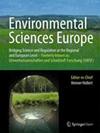Replacing hazardous chemicals with safer alternatives is essential for a toxic-free environment. To avoid regrettable substitution, a comparison of the entire spectrum of potential impacts of the candidate for substitution with those of the available alternatives is required. A particular challenge is to also capture yet unknown long-term impacts of (very) persistent chemicals, including but not limited to PBT and CMR properties.
For a flexible and transparent comparative ranking of the impact potential of chemical alternatives, we propose a concern-based scoring scheme (Scoring scheme for Comparative Ranking of chemical Alternatives, SCoRA). The approach accounts for hazards due to ecotoxicity in water/sediment and soil, and effects on human health such as CMR properties and endocrine disruption. This is combined with exposure-related information in terms of expected environmental pollution stock levels. The SCoRA approach is illustrated with case study chemicals of very high concern (15 SVHC, mostly PBT, representing different chemical classes with different modes of bioaccumulation and toxicity). A comparison of PBT substances reveals that SCoRA goes well beyond binary screening criteria (PBT: yes/no), showing that PBT substances are all of very high concern, although their impact profiles can be substantially different. Ordinal scores support a detailed characterisation of their potential for long-term impacts. Furthermore, SCoRA enables a coherent comparative assessment of substances with different primary concerns, for example PBTness and endocrine disruption.
SCoRA complements existing and established tools such as comparative risk assessment. It is particularly useful, when, for example, only limited data are available or when risk assessment is not feasible, as in the case of persistent chemicals. A strength of SCoRA is that the relative contributions of the impact components determining the concern can be visualised with a heatmap and fingerprints. This facilitates communication among scientists, regulators, risk managers, stakeholders and the public.


